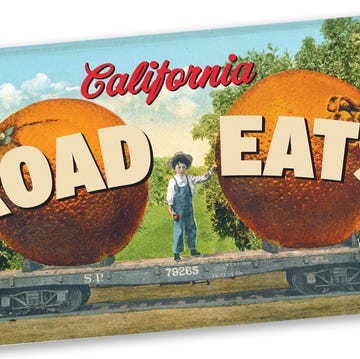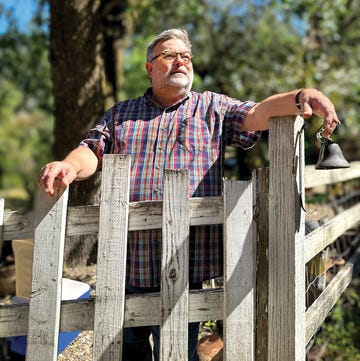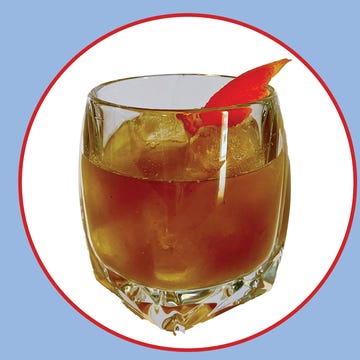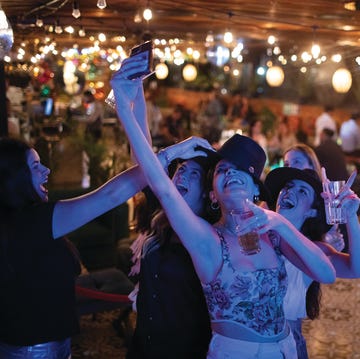It’s been eight years since Joseph Kanach, a Los Angeles middle school teacher, bit into his first cherimoya. During a trip to El Salvador, the driver shuttling him between surf spots swerved the van and hopped out to pluck some scaly globes off a tree, where they hung like so many green hand grenades.
Kanach tasted one and spat it out.
“Wrong one,” the driver said, handing him a riper fruit.
Kanach chomped into its custard-like white flesh. “It was sweet and tangy at the same time,” he remembers. The cherimoya’s distinct yet elusive flavor hinted to him of pineapple; to others, it can suggest banana, mango, kiwi, strawberry, or even vanilla. “It was the juiciest fruit I’d ever eaten,” he continues. “I couldn’t understand why this wasn’t everywhere in America.”
This article appears in Issue 28 of Alta Journal.
SUBSCRIBE
The taste sensation was so sublime that it led Kanach to start Hapa Joe’s, his home nursery in El Segundo, a small beach city on Santa Monica Bay. There, he grows exotic fruit trees and cultivates their seeds and seedlings to sell to other fruit enthusiasts.
His 150 or so clients range from a 78-year-old former president of the California Rare Fruit Growers Association (CRFG), a nonprofit composed of more than 2,000 fruit gardeners in the state and around the world, to a 24-year-old RV detailer who drives 70 miles from Riverside. Both stopped by this spring to pick up yangmei trees that Kanach had flown in from China. “They have long tendrils that come from the seed,” Kanach says about the yangmei’s berries, considered a delicacy.
“He’s growing stuff no one else is,” says Ronni Kern, chair of the West Los Angeles chapter of the CRFG. Her own Santa Monica garden includes longan, Chinese persimmon, yangmei, and white sapote. “Like many of us, he’s an obsessive.”
Kanach was born into a family of farmers. As an adult, he craved the tropical fruits—lychee, durian—that his Thai mother had fed him when he was growing up in Houma, Louisiana. (Hapa, a Hawaiian word, has evolved to mean “half Asian”; his father is Polish American.)
Shortly after that first cherimoya, Kanach began planting exotic fruit trees in his garden. It wasn’t until a bout of pandemic teacher burnout that he considered turning his fascination with unusual fruits into a full-time business. Initially, he sold seeds on Etsy. Then, in 2022, he took time off from teaching to travel to the Amazon rainforest and other tropical regions. He met local growers and, with guides, hacked his way through dense jungle in search of elusive fruits.
In Brazil, the sight of trees being felled to create cattle farms alarmed him. “They’re bulldozing down a field as we’re walking by,” he remembers. He became concerned that fruit varieties could be lost, including Brazil’s Eugenia tinctoria, a berry that he hopes to save from extinction.
Through the U.S. Department of Agriculture’s inspection system, Kanach began to import seeds home to Southern California, where he used his science background to germinate them and attempt to adapt certain fruits to grow indoors in pots.
On his travels, he has found other little-known varieties, including Duguetia aff. marcgraviana Lucenilde, a knobby fruit as sweet as melon and papaya, which he named after the woman who pointed him down a Brazilian dirt path to a tree laden with golden spheres. After a year’s germination, their seeds are thriving.
While Kanach loved adventure, the endeavor wasn’t profitable. “Marketing and sales was not my forte,” he says. After a year of exploring, he found a renewed enthusiasm for teaching and chose to make Hapa Joe’s an impassioned side venture.
On a recent Saturday, dressed in a T-shirt and sweatpants, his feet bare, Kanach, who is 47, with close-cropped hair and designer stubble, heads for a black fabric portable wardrobe. It sits next to the living room fireplace in his Spanish-style house, which smells of damp soil and greenery.
With a flourish, he unzips the wardrobe to reveal his VIP collection of uncommon seedlings, mostly from Peru and Brazil and heated with LED lights. A dining room, converted into an indoor nursery, contains perhaps 2,000 seedlings that sit in pop-up greenhouses and on metal shelving protected behind plastic curtains.
If the setup appears makeshift, “it’s what I can afford on a teacher’s salary,” says Kanach, who is currently teaching children with extensive needs in Manhattan Beach.
“It’s earthy sometimes, especially after he’s been digging around,” observes his wife, Erin Borgstrom, whose grandparents built the house. A biology and environmental science teacher, she encourages her husband’s research. Still, it took convincing for her to move her parents’ dining table and grandparents’ china cabinet to the living room.
Outdoors, spiky ropes of dragon fruit cactus line a fence. Their flamboyant blooms yield fruit in summer through early fall, the succulent interior filled with tiny black seeds that pop in the mouth. The feathery white flowers of a Peruvian ice cream bean tree become leathery pods whose sweet cotton ball–like insides cover seeds as shiny as water beetles. Elsewhere on the 7,000-square-foot lot are rare strains of lychee, loquat, and atemoya. Jaboticaba trees grow grapelike berries—one of Brazil’s most popular fruits—on their trunks.
Kanach admits that some trees that should have been viable died on his watch early on, until he concocted his own sandy plant mix (“there’s no peat moss growing in the Amazon,” he says).
For California home gardeners wanting to create their own exotic fruit orchards, Kanach suggests starting with undemanding loquats, figs, and cherimoyas—all grown successfully throughout the state since the 1800s, figs even earlier. He also recommends a jaboticaba or a showy Eugenia uniflora, which bears sweet-tart cherrylike fruit: “really tough to kill.”
Other dealers sell tropical fruit seeds that don’t necessarily result in delicious fruit, Kanach notes, which is why much of his travel has been, and will be, about tasting: “I didn’t want to waste five years growing something and then [have] it not taste good,” he says, days before embarking with his wife on a Brazilian vacation–cum–sampling trip. “I think there are still fruits to be discovered. We don’t want to miss out on something that could be super delicious.”
In the future, Kanach will make fewer expeditions. He plans to purchase seeds gathered by South American seed hunters who have emerged in recent years. This will help their local communities—and reduce his share of grueling fieldwork.
“It all sounds wonderful when you’re sitting on your couch in L.A., but when you’re in the jungle, and it’s 95 degrees, and you’ve got mosquitoes everywhere, and you’re out of bug spray, it’s not so wonderful,” Kanach says. “You could spend two days walking around and find nothing.
“And then you’ve got to fight the monkeys for anything that tastes good, so good luck.”•
Louise Farr is based in Los Angeles, where she’s a contributing editor for the Writers Guild of America West magazine. She’s the author of the true-crime book The Sunset Murders.












